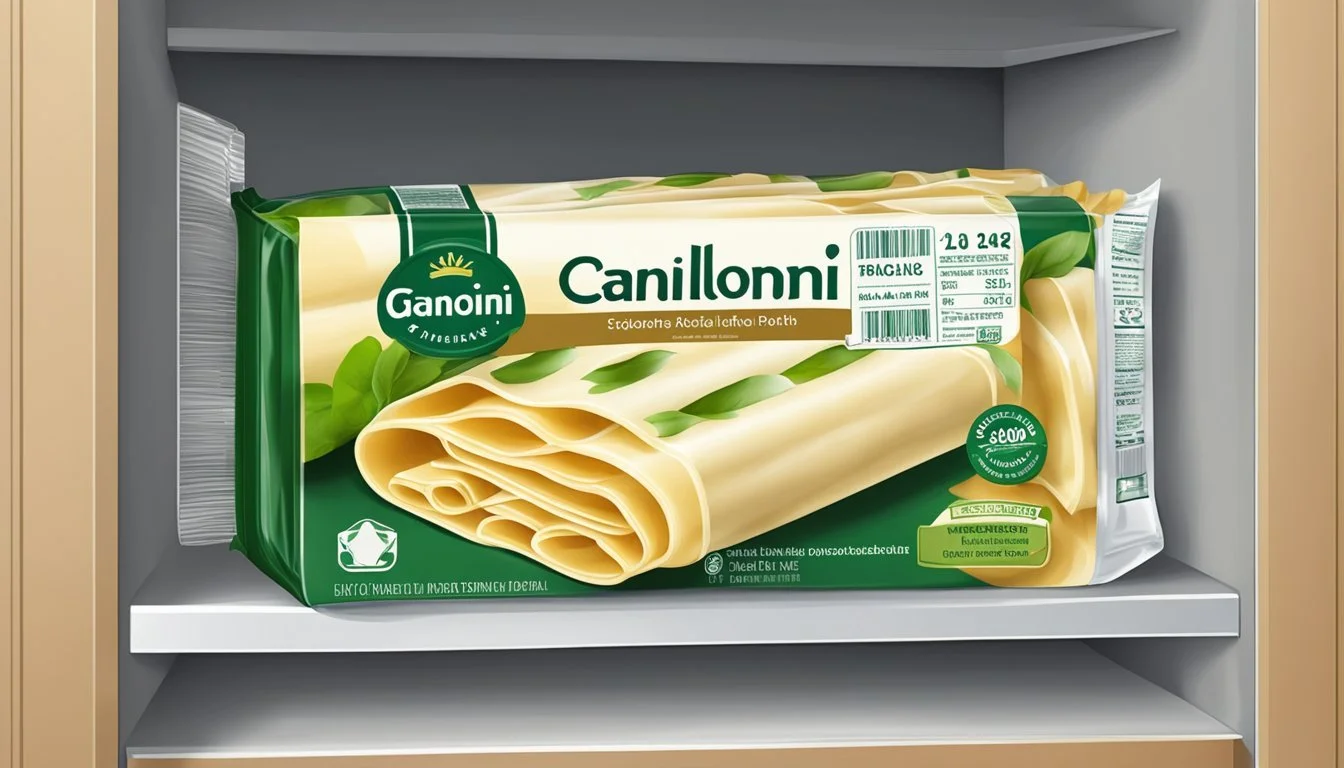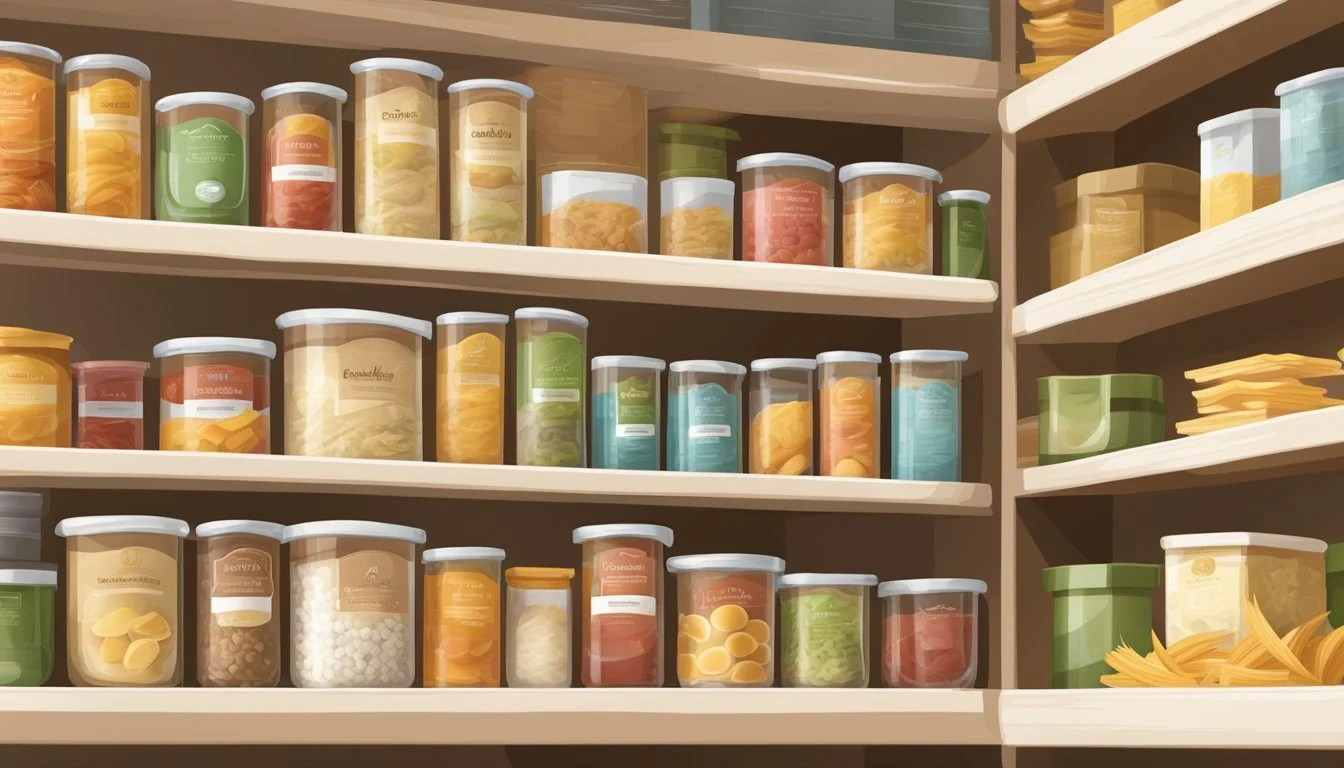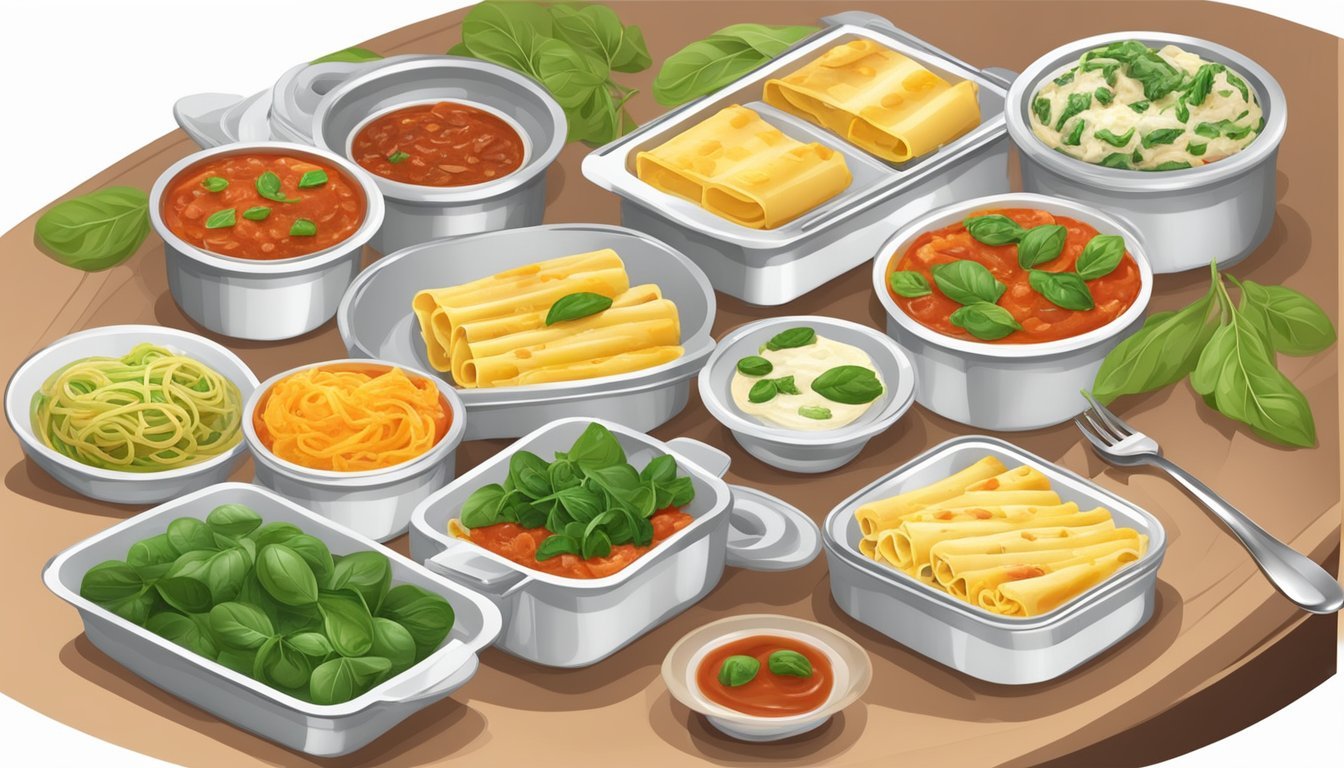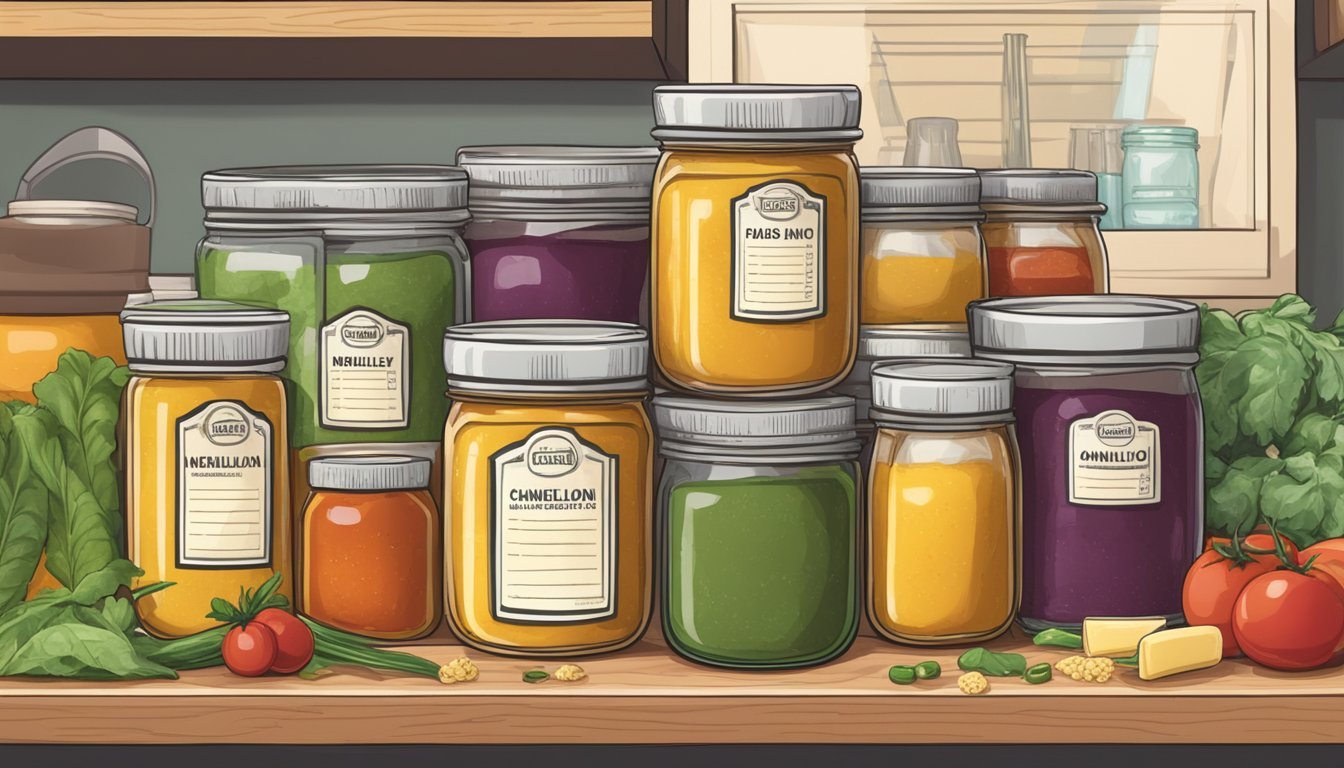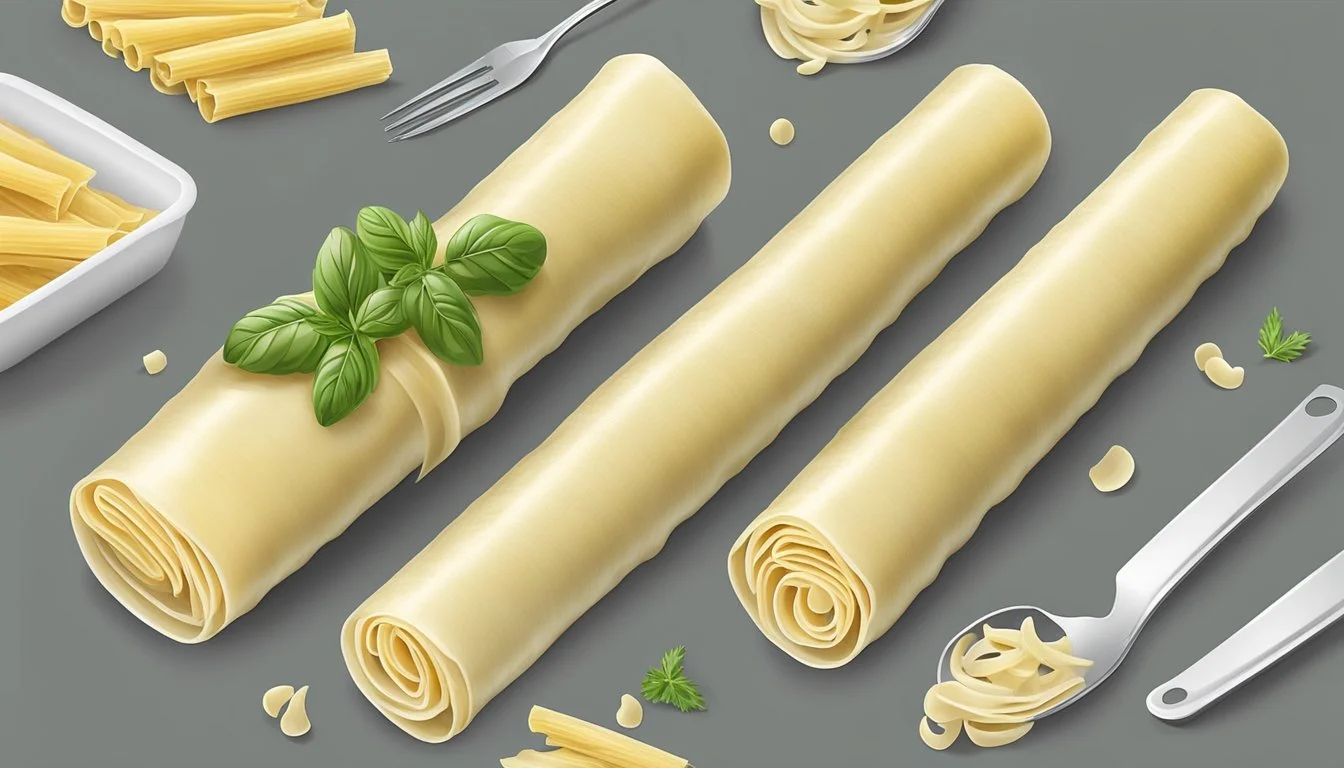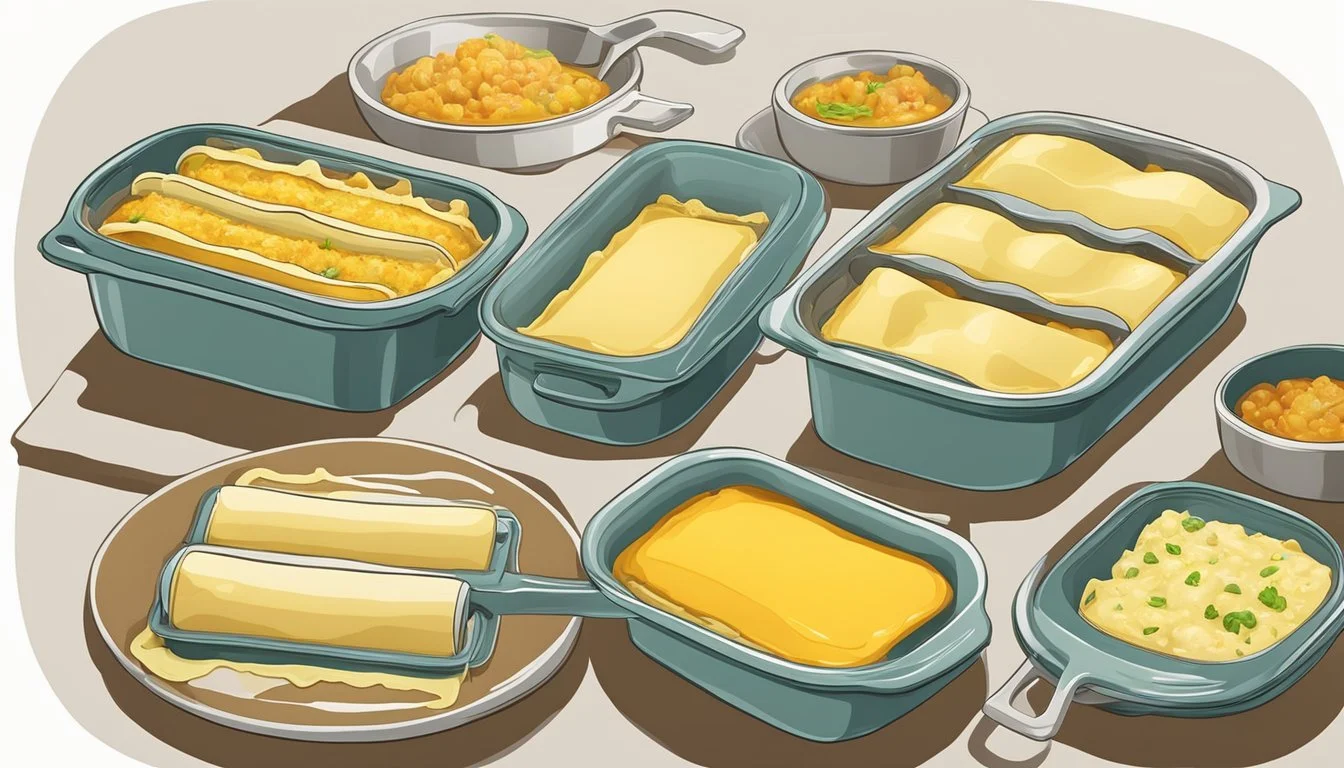How Long Do Cannelloni Pasta Last?
Shelf Life and Storage Tips
Determining the shelf life of cannelloni pasta depends largely on whether it is dry or fresh. Dry cannelloni, like other dried pastas (What wine goes well with pasta?), is known for its longevity, often remaining edible for 1-2 years past its "best by" date if stored properly in a cool, dry place. This long shelf life results from the pasta's low moisture content, which reduces the risk of spoilage and microbial growth.
Fresh cannelloni, on the other hand, has a significantly shorter shelf life. Typically made from a simple mixture of eggs and flour, fresh pasta (how long does fresh pasta last?) can last for about 4-5 days beyond its "best by" date when kept refrigerated. Since fresh pasta contains more moisture than its dried counterpart, it is more susceptible to bacteria growth and spoilage. It’s essential to observe proper storage methods and use the pasta within the recommended time frame to ensure quality and safety.
Regardless of type, the pasta's shelf life can also be influenced by factors like storage conditions and whether it includes perishable fillings. Cooked cannelloni, especially when filled and topped with sauces or cheese, will generally keep for several days in the refrigerator. To best preserve its quality and taste, it should be properly covered and stored at a consistent temperature.
Understanding Cannelloni Pasta
Cannelloni pasta are large cylindrical tubes, a type of stuffed pasta renowned for their versatility and capacity to hold robust fillings. Made from durum wheat flour, this pasta originated from Italy and is an essential ingredient for creating hearty baked dishes. The traditional approach involves encasing savory fillings like ricotta, beef, or spinach (What wine goes well with spinach?), and then baking covered with sauce.
The preparation of cannelloni involves two key phases: preparing the pasta dough and assembling the dish. The dough is made with a base of flour and may include eggs, resulting in an egg pasta with a richer flavor and texture. Homemade pasta particularly benefits from the inclusion of fresh eggs, enhancing the dough's elasticity which is essential for rolling.
Here’s a brief on necessary components and preparations:
Dough Base: Durum wheat flour, with or without eggs.
Fillings: Often include a mix of ricotta cheese, ground beef, and spinach.
Sauces: A cheese cannelloni is usually blanketed in marinara or béchamel sauce.
Baking Time: Typically requires 25-35 minutes in a preheated oven.
When crafting cannelloni, chefs must ensure the pasta retains sufficient bite, known as 'al dente', to withstand the baking process without becoming overly soft. The exact cook time varies, but generally, cannelloni needs to sizzle in the oven to reach the perfect fusion of flavors and textures.
Cannelloni's shelf life is influenced by whether it is dried or fresh. Dried cannelloni, much like other dried pastas, has a considerable pantry life, usually lasting 1-2 years beyond its "best by" date. Fresh cannelloni, on the other hand, should be consumed within 4-5 days of its best by date, especially if it contains perishable items like cheese or meat.
Proper Storage Practices
The longevity of cannelloni pasta is greatly influenced by the method of storage. Proper storage techniques are essential to maintain the pasta's quality and prevent spoilage.
Pantry Storage
For dry cannelloni pasta, a pantry provides an ideal environment. The pasta should be stored in an airtight container to protect it from moisture and pests. The recommended conditions are a cool, dark space where temperatures are consistently maintained between 40°F (4°C) and 75°F (24°C). Humidity levels should be kept below 40% to ensure the pasta stays dry.
Store in an airtight container or plastic sealable bag.
Keep in a cool, dark, and dry place.
Refrigerator Storage
When dealing with fresh cannelloni pasta, the refrigerator is the best place for short-term storage. The pasta should be wrapped tightly in plastic wrap or placed in an airtight container to keep out moisture and other flavors. Use fresh cannelloni within 2 days to ensure the best quality and safety.
Wrap tightly in plastic.
Consume within 48 hours.
Freezer Storage
For long-term preservation, freezing cannelloni, whether fresh or pre-cooked, is effective. First, ensure it is stored in a freezer-safe airtight container or heavy-duty freezer bag. Properly stored, it can last for up to 3 months. To use, thaw in the refrigerator or cook directly from frozen, adjusting cooking times accordingly.
Place in a freezer-safe airtight container or plastic bag.
Store for up to 3 months for optimal quality.
Maximizing Freshness and Shelf-Life
To ensure the longevity of cannelloni pasta, proper storage methods differ significantly whether the pasta is fresh or cooked. Attention to these details helps maintain quality and reduce the risk of foodborne illness.
Fresh Cannelloni
Fresh cannelloni pasta should be stored in the refrigerator, where it can last up to 2-3 days. To maximize shelf life, the pasta should be placed in an air-tight container or wrapped securely in plastic wrap to protect it from moisture and other contaminants. For longer storage, freezing fresh cannelloni is an option. When stored in a freezer-safe container or wrapped tightly in foil and then placed in a freezer bag, it can maintain quality for up to 2 months. It's essential to note the expiration date provided by the manufacturer, as this date indicates the peak quality of the fresh pasta.
Cooked Cannelloni
Once cannelloni is cooked, its shelf life decreases. Cooked cannelloni should ideally be consumed within 1-2 days when stored in the refrigerator. Storage should be in an airtight container, covered with a lid or securely wrapped in foil to prevent drying out and limit exposure to bacteria. If one needs to extend the shelf life further, cooked cannelloni can be frozen in much the same way as fresh pasta, with an expected quality retention for up to 3 months. Always ensure the pasta has cooled to room temperature before refrigeration to avoid increasing the moisture content inside the container, which could lead to faster spoilage.
Recognizing Spoilage
When assessing if cannelloni pasta has spoiled, one must look for clear visual changes and off-putting odors as primary indicators of spoilage. These sensory signals are often reliable measures of whether the pasta is no longer suitable for consumption.
Visual Indicators
Spoilage of cannelloni pasta is often first noticeable by the presence of mold or discoloration. Mold can present as fuzzy spots in a variety of colors—commonly white, green, or black—and it indicates a significant deterioration of the pasta, rendering it unsafe to eat. The following list summarizes the visual signs to look for:
Presence of mold, a clear sign of spoilage
Discoloration, which may include unexpected dark, white, or colored spots
Any signs of insects or foreign matter
Olfactory Indicators
The odor of cannelloni pasta is another telling sign of its quality. Fresh cannelloni should have a neutral or slightly earthy smell characteristic of uncooked pasta. An unpleasant or sour smell is indicative of spoilage and means the pasta should not be consumed. Key olfactory indicators include:
A sour, musty, or other malodorous scent
Any unexpected changes from the pasta’s typically neutral aroma
It's crucial to note that while dry cannelloni can have an extended shelf-life, any presence of mold or offensive odors are clear signs that the pasta should not be used, as these conditions pose a food safety risk.
Preparation and Usage Tips
To ensure the cannelloni maintain their quality and flavor, proper preparation and cooking techniques are essential.
Cooking Recommendations
When preparing cannelloni, the pasta should not be pre-boiled; it cooks in the oven. Begin by preheating the oven to 200 degrees Fahrenheit (93 degrees Celsius). Cannelloni is typically baked for 15-20 minutes or until heated thoroughly. This ensures that the fillings are properly cooked and the pasta is al dente.
Seasoning and Flavoring
Season the cannelloni filling generously to bring out the flavors. Common seasonings include salt, pepper, and often nutmeg (how long does nutmeg last?) for fillings with cheese and spinach. When incorporating meat, ensure it's fully cooked before filling the pasta. To infuse the dish with rich flavor, olive oil can be used in both the filling mixture and drizzled on top prior to baking.
Pairing with Sauces
The proper sauce can enhance cannelloni significantly. Tomato sauce is a classic pairing, often layered at the bottom of the baking pan before the cannelloni is added. For a creamy counterpart, béchamel sauce spread over the cannelloni complements fillings especially well. Whether opting for a vegetable or meat filling, ensure the sauce complements the flavor profile.
Reheating and Serving Cannelloni
When reheating cannelloni, retaining moisture is key to preserving the pasta's flavor and texture. The following methods provide effective ways to warm up this Italian classic without compromising its quality.
Oven Method
Preheat the oven to 350°F (175°C).
Place the cannelloni in a baking dish and cover to maintain moisture.
Reheat for 20 to 25 minutes, checking to ensure the cannelloni is heated through uniformly.
Microwave Method
Transfer cannelloni to a microwave-safe dish and cover.
Add a small amount of water or broth to introduce moisture.
Heat on high for 1 to 2 minutes, stirring halfway through if needed.
Skillet Method
Heat a skillet over medium heat and add a splash of water or broth.
Place the cannelloni in the skillet and cover with a lid to retain moisture.
Warm thoroughly for a few minutes, turning occasionally for even heating.
Cannelloni Variations and Alternatives
Cannelloni, a cherished Italian pasta dish, offers a range of regional varieties and can be adapted to suit various dietary needs. From replacing traditional fillings to altering the pasta itself, options abound for those seeking to explore beyond the classic cannelloni or accommodate dietary restrictions.
Regional Varieties
Italians have perfected the art of stuffed pasta, with cannelloni being a prime example. This tubular pasta is traditionally filled with a mixture of ricotta cheese and spinach or minced meat and covered in a béchamel or marinara sauce. However, regional interpretations vary significantly. Southern Italy, for instance, may include spicier fillings and richer sauces, while northern areas might feature subtler flavors and cream-based sauces.
Manicotti: Often confused with cannelloni, manicotti are typically ridged, larger, and made from a crepe-like batter rather than pasta dough.
Lasagna: As an alternative to tubular pasta, lasagna uses flat sheets and is layered rather than rolled, providing a different textural experience but similar flavor profiles.
Italian culinary tradition often involves incorporating local ingredients, causing variations in recipes from town to town, which offers a tapestry of flavors and preparations within the cannelloni framework.
Dietary Alternatives
For those following specific diets, cannelloni can be adapted to meet their needs without sacrificing flavor.
Gluten-Free: Gluten-free cannelloni pasta is available for individuals with celiac disease or gluten sensitivity, ensuring they can still enjoy this classic dish. Gluten-free options are typically made from rice flour (how long does rice flour last?), cornflour, or a mix of gluten-free grains.
Vegan and Vegetarian: While cannelloni often contains meat, vegetarian versions with ricotta cheese and vegetables like spinach are popular. Vegan adaptations might use tofu (how long does tofu last?) or vegan cheeses to mimic traditional fillings.
The table below highlights alternatives for dietary restrictions:
Diet Type Cannelloni Alternative Gluten-Free Corn or rice flour-based pasta Vegan Tofu and vegan cheese instead of ricotta and meat Dairy-Free Nut-based cheese or lactose-free ricotta
Whether due to dietary reasons or simply to explore the underpinnings of Italian pasta diversity, these alternatives provide a way to experience the essence of cannelloni through different lenses.
Health and Nutritional Information
When considering the nutritional aspects of cannelloni pasta, it is important to focus on the caloric content and the balance of macronutrients, which are influenced by the ingredients used in the dish such as cheese, olive oil, and any added proteins or vegetables like spinach and ricotta.
Caloric Content
Cannelloni, a stuffed pasta dish, typically contains a notable amount of calories due to its rich ingredients. A serving size of cannelloni with sauce, weighing approximately 364 grams, can contain around 493 calories. This amount can vary depending on the specific recipe and serving size.
Macronutrients
Protein: Cannelloni can be a good source of protein, especially when filled with ingredients such as spinach and ricotta or meat. The exact protein content will vary with the choice of filling.
Carbohydrates: A serving of cannelloni is composed mainly of carbohydrates, with one serving containing about 37 grams. The primary source of carbs is the pasta itself, typically made from durum wheat flour.
Fats: The fat content in cannelloni can be quite high due to ingredients like ricotta, olive oil, and parmesan cheese. A single serving may contain up to 26 grams of total fat, with saturated fat accounting for around 12 grams.
The balance of these macronutrients contributes to the overall nutritional profile of cannelloni, making it a dense and hearty option within a balanced diet.
Culinary Techniques and Tools
When crafting cannelloni, specific culinary techniques and tools are paramount for both the pasta making and baking processes. These methods ensure proper consistency and texture, essential for a successful pasta dish.
Pasta Making
The production of homemade cannelloni begins with the pasta making process. It typically requires a pasta machine to ensure the dough achieves the necessary thinness. For home cooks without a machine, a rolling pin can serve as an alternative, although it demands more effort to attain even sheets suitable for rolling. The pasta is then cut into rectangles, which are the building blocks of cannelloni tubes. One must carefully fill these rectangles with the chosen filling, taking care not to overfill to prevent bursting during the baking process.
Baking Cannelloni
Once the cannelloni is filled and rolled, they are laid onto baking sheets and prepared for the oven. The oven should be preheated to an appropriate temperature, commonly around 200 degrees Celsius (180 degrees Fahrenheit with a fan) to achieve a golden and crispy outer texture. Baking typically takes between 30 to 35 minutes but may vary depending on the oven and recipe specifics. Throughout the baking process, cannelloni should be covered with foil to protect the filling from burning and then uncovered near the end to crisp the pasta bake exterior.
Enhancing Cannelloni Dishes
Elevating the flavors in cannelloni dishes can be achieved through thoughtful additions of herbs, spices, carefully selected cheeses, and a variety of meat and vegetable ingredients. These augmentations not only enhance the taste but also contribute to the dish's complexity and appeal.
Herbs and Spices
Sage: Its earthy and slightly peppery flavor complements pork and chicken fillings.
Basil: Fresh or dried, basil adds a sweet and aromatic touch, ideal for tomato-based sauces.
Rosemary: Its woody essence pairs well with ground beef, intensifying the robustness of the meat.
Parsley: Bright and fresh, parsley can lift the flavor profile while adding a pop of color.
Nutmeg: A pinch of ground nutmeg enhances béchamel sauce, lending a subtle warmth.
When using herbs and spices, balance is key to avoid overpowering the other ingredients in the dish.
Cheese Selection
Mozzarella: A classic choice for its meltability and mild taste, it allows other flavors to shine through.
For a richer experience, one can consider blending different types of cheese. For instance:
Mix mozzarella with sharper cheeses like Parmesan for more depth.
The choice of cheese should complement the other ingredients and contribute to the desired texture of the finished dish.
Meat and Vegetable Additions
Meats:
Ground Beef: A staple for its versatility and ability to absorb flavors.
Sausage: Offers a spicier, more pronounced taste.
Vegetables:
Mushrooms: Provide an earthy tone and meaty texture, even in vegetarian options.
Carrots & Celery: These can be finely chopped for a subtle sweetness and added crunch.
Peas: They bring a gentle sweetness and a vibrant burst of color.
Adding meat creates heartiness while vegetables contribute freshness and lightness to the cannelloni. Users should consider the moisture content of vegetables to prevent a soggy filling.

